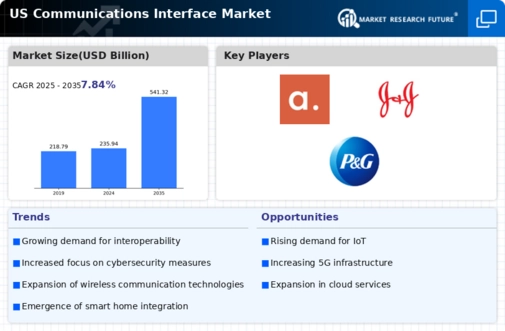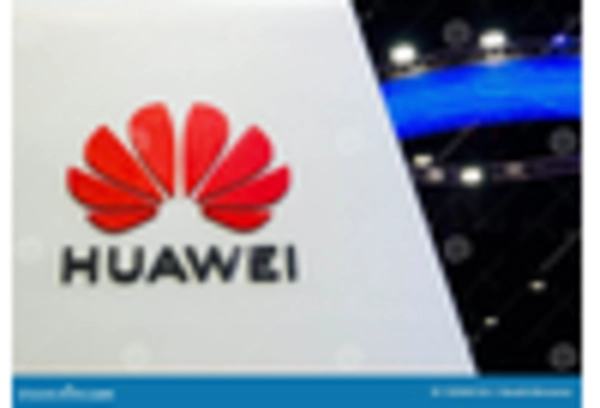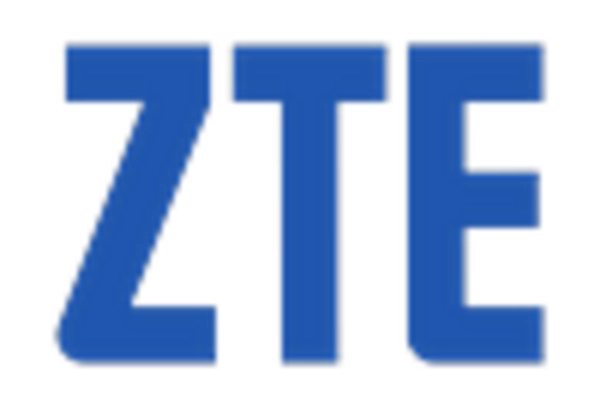Emergence of Edge Computing
The rise of edge computing is poised to transform the communications interface market significantly. By processing data closer to the source, edge computing reduces latency and enhances the performance of communication systems. This shift is particularly relevant for applications requiring real-time data processing, such as autonomous vehicles and smart cities. As organizations increasingly adopt edge computing solutions, the market is likely to experience a surge in demand for interfaces that support this technology. Projections suggest that the edge computing market could reach $15 billion by 2026, indicating a substantial opportunity for growth within the communications interface market. This trend underscores the importance of developing adaptable and efficient communication interfaces that can leverage the benefits of edge computing.
Increased Focus on User Experience
User experience (UX) is emerging as a critical driver in the communications interface market. As competition intensifies, companies are prioritizing the development of intuitive and user-friendly interfaces. This focus on UX is expected to enhance customer satisfaction and retention, which are vital for long-term success. Research indicates that organizations that invest in UX design can see a return on investment of up to 100% within a year. The emphasis on creating engaging and accessible communication tools is likely to influence product development strategies across the industry. As a result, the communications interface market may witness a surge in innovative solutions tailored to meet the evolving needs of users.
Growing Demand for Interoperability
Interoperability among diverse communication systems is becoming increasingly crucial in the communications interface market. As organizations adopt various platforms and technologies, the need for seamless integration across these systems is paramount. This demand is reflected in the market, where interoperability solutions are projected to account for nearly 30% of the total market share by 2026. Companies are investing in solutions that facilitate communication between different devices and applications, thereby enhancing operational efficiency. The push for standardized protocols and interfaces is likely to foster innovation and competition, ultimately benefiting end-users. This trend indicates a shift towards more cohesive communication ecosystems, which could reshape the landscape of the communications interface market.
Regulatory Compliance and Standards
Regulatory compliance is a significant driver impacting the communications interface market. As data privacy and security regulations become more stringent, companies are compelled to adopt solutions that adhere to these standards. The implementation of frameworks such as the General Data Protection Regulation (GDPR) and the California Consumer Privacy Act (CCPA) necessitates that organizations invest in compliant communication systems. This trend is likely to shape product offerings and influence purchasing decisions, as businesses seek to mitigate risks associated with non-compliance. The financial implications are substantial, with potential fines reaching millions of dollars. Thus, the focus on regulatory compliance is expected to drive innovation and investment in the communications interface market.
Advancements in Network Infrastructure
The ongoing enhancements in network infrastructure are pivotal for the communications interface market. With the advent of 5G technology, the demand for high-speed, low-latency communication is surging. This transition is expected to facilitate a more robust framework for various applications, including IoT and smart devices. As of 2025, investments in network upgrades are projected to reach approximately $100 billion in the US alone. These advancements not only improve connectivity but also enable the integration of advanced communication protocols, thereby expanding the capabilities of the communications interface market. Furthermore, the increasing reliance on cloud-based services necessitates a more sophisticated network infrastructure, which could potentially drive growth in this sector.

















Leave a Comment